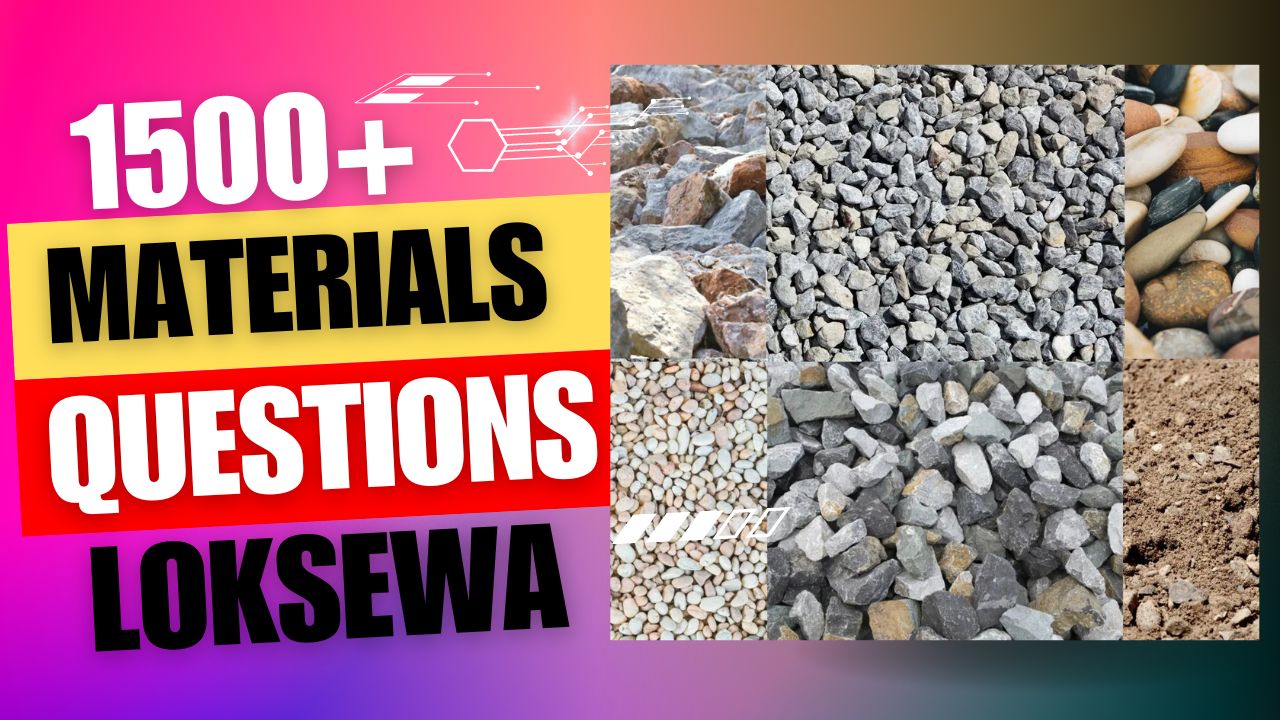401. What is the primary raw material used in the manufacture of lime?
a) Limestone
b) Sand
c) Gypsum
d) Clay
View Answer
Correct answer: a) Limestone
Explanation: Limestone is the primary raw material used in the manufacture of lime. It is a sedimentary rock mainly composed of calcium carbonate.
402. What is the process of heating limestone to a high temperature to produce lime called?
a) Calcination
b) Carbonation
c) Hydration
d) Sintering
View Answer
Correct answer: a) Calcination
Explanation: The process of heating limestone to a high temperature (around 900-1100°C) to produce lime is called calcination. During calcination, limestone undergoes a chemical decomposition and converts into calcium oxide (lime).
403. Which type of kiln is commonly used for the manufacture of lime?
a) Vertical kiln
b) Rotary kiln
c) Tunnel kiln
d) Electric kiln
View Answer
Correct answer: b) Rotary kiln
Explanation: Rotary kilns are commonly used for the manufacture of lime. These kilns rotate and heat the limestone, allowing for efficient and controlled calcination.
404. What is the approximate temperature range used in the calcination process of limestone to produce lime?
a) 200-400°C
b) 500-700°C
c) 900-1100°C
d) 1200-1400°C
View Answer
Correct answer: c) 900-1100°C
Explanation: The calcination process of limestone to produce lime typically occurs at a temperature range of 900-1100°C. This temperature range is necessary to achieve the chemical decomposition of calcium carbonate.
405. Which type of lime is produced by calcining limestone without any additives?
a) Hydraulic lime
b) Fat lime
c) Dolomitic lime
d) Slaked lime
View Answer
Correct answer: b) Fat lime
Explanation: Fat lime is produced by calcining limestone without any additives. It is also known as non-hydraulic lime and has a relatively low setting and hardening ability.
406. Which type of lime is produced by adding specific clay or other additives during the calcination process?
a) Hydraulic lime
b) Fat lime
c) Dolomitic lime
d) Slaked lime
View Answer
Correct answer: a) Hydraulic lime
Explanation: Hydraulic lime is produced by adding specific clay or other additives, such as pozzolanic materials, during the calcination process. It has the ability to set and harden in the presence of water.
407. Which term describes the final product obtained after the calcination process of limestone?
a) Lime powder
b) Lime putty
c) Lime mortar
d) Lime slurry
View Answer
Correct answer: a) Lime powder
Explanation: The final product obtained after the calcination process of limestone is lime powder. It consists mainly of calcium oxide (CaO).
408. What is the process called when lime powder is hydrated with water to produce calcium hydroxide?
a) Calcination
b) Carbonation
c) Hydration
d) Sintering
View Answer
Correct answer: c) Hydration
Explanation: The process of hydrating lime powder with water to produce calcium hydroxide (slaked lime) is called hydration. This process involves a chemical reaction between lime and water.
409. What is the common name for calcium hydroxide, the compound produced when lime is hydrated with water?
a) Limestone
b) Gypsum
c) Lime putty
d) Lime mortar
View Answer
Correct answer: c) Lime putty
Explanation: Calcium hydroxide, also known as slaked lime, is commonly referred to as lime putty when it is in a paste-like form after hydration with water.
410. Which term describes the process of converting lime putty into a solid material through the absorption of carbon dioxide from the air?
a) Carbonation
b) Curing
c) Hydration
d) Calcination
View Answer
Correct answer: a) Carbonation
Explanation: Carbonation is the process of converting lime putty into a solid material through the absorption of carbon dioxide from the air. This process results in the formation of calcium carbonate, which strengthens and hardens the lime.





